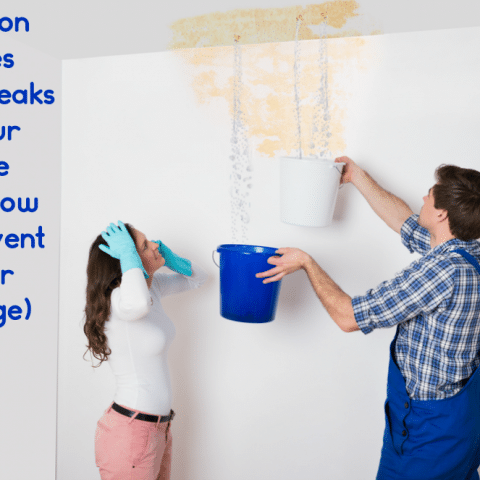How to Locate and also Repair Water Leaks-- A Comprehensive Overview
How to Locate and also Repair Water Leaks-- A Comprehensive Overview
Blog Article
How do you actually feel about Hacks to detect leaks?

Early detection of dripping water lines can alleviate a potential calamity. Apart from saving you money, it will certainly reduce the stress and also aggravation. The minute you discover a leakage, calling your plumber for fixings is the best service. Some tiny water leaks may not be visible. If you can not spot it with your naked eyes, below are some hacks that help.
1. Take A Look At the Water Meter
Every house has a water meter. Examining it is a surefire manner in which aids you find leakages. For starters, turn off all the water sources. Guarantee no one will flush, use the tap, shower, run the washing machine or dish washer. From there, go to the meter and also watch if it will certainly change. Given that nobody is using it, there need to be no motions. If it moves, that shows a fast-moving leak. Similarly, if you find no changes, wait an hour or more and inspect back again. This means you may have a slow leak that could even be underground.
2. Inspect Water Intake
Examine your water bills and track your water intake. As the one paying it, you must discover if there are any disparities. If you spot sudden changes, despite your intake being the same, it suggests that you have leaks in your plumbing system. Bear in mind, your water expense need to drop under the same range each month. An abrupt spike in your costs indicates a fast-moving leak.
At the same time, a stable boost on a monthly basis, even with the exact same habits, shows you have a slow leak that's also slowly rising. Call a plumber to completely inspect your residential or commercial property, specifically if you really feel a warm area on your floor with piping below.
3. Do a Food Coloring Test
30% comes from commodes when it comes to water consumption. Examination to see if they are running appropriately. Drop specks of food color in the tank as well as wait 10 minutes. If the shade in some way infiltrates your bowl throughout that time without flushing, there's a leak in between the container and bowl.
4. Asses Outside Lines
Don't forget to check your outside water lines also. Examination spigots by connecting a yard tube. Ought to water seep out of the connection, you have a loose rubber gasket. Replace this as well as make certain all links are limited. It will aid get it properly checked out and also kept each year if you've obtained a sprinkler system. One small leak can throw away lots of water and also spike your water costs.
5. Check as well as Assess the Situation
Property owners need to make it a habit to examine under the sink counters and also even inside cabinets for any type of bad odor or mold development. These two red flags show a leakage so punctual interest is called for. Doing regular evaluations, also bi-annually, can conserve you from a significant trouble.
Inspect for discolorations and damaging as the majority of appliances as well as pipelines have a life span. If you believe dripping water lines in your plumbing system, don't wait for it to intensify.
Early detection of leaking water lines can reduce a prospective calamity. Some little water leaks might not be visible. Checking it is a surefire method that helps you find leaks. One tiny leakage can squander tons of water and surge your water bill.
If you suspect dripping water lines in your plumbing system, don't wait for it to rise.
WARNING SIGNS OF WATER LEAKAGE BEHIND THE WALL
PERSISTENT MUSTY ODORS
As water slowly drips from a leaky pipe inside the wall, flooring and sheetrock stay damp and develop an odor similar to wet cardboard. It generates a musty smell that can help you find hidden leaks.
MOLD IN UNUSUAL AREAS
Mold usually grows in wet areas like kitchens, baths and laundry rooms. If you spot the stuff on walls or baseboards in other rooms of the house, it’s a good indicator of undetected water leaks.
STAINS THAT GROW
When mold thrives around a leaky pipe, it sometimes takes hold on the inside surface of the affected wall. A growing stain on otherwise clean sheetrock is often your sign of a hidden plumbing problem.
PEELING OR BUBBLING WALLPAPER / PAINT
This clue is easy to miss in rooms that don’t get much use. When you see wallpaper separating along seams or paint bubbling or flaking off the wall, blame sheetrock that stays wet because of an undetected leak.
BUCKLED CEILINGS AND STAINED FLOORS
If ceilings or floors in bathrooms, kitchens or laundry areas develop structural problems, don’t rule out constant damp inside the walls. Wet sheetrock can affect adjacent framing, flooring and ceilings.
https://www.servicemasterbyzaba.com/blog/how-to-detect-water-leakage-in-walls/

Do you like reading up on Finding hidden leaks? Make feedback down the page. We'd be interested to know your reactions about this blog posting. Hoping that you come back again in the near future. If you enjoyed our article kindly make sure you remember to pass it around. Thanks for taking the time to read it.
Report this page